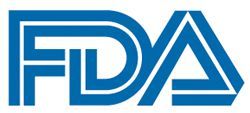FDA Grants Priority Review to Olaparib for BRCA+, High-Risk Early Breast Cancer
The FDA has granted a priority review designation to a supplemental new drug application for the use of olaparib as adjuvant therapy in patients with BRCA-mutated, high-risk, HER2-negative early breast cancer who have previously received neoadjuvant or adjuvant chemotherapy.
FDA

The FDA has granted a priority review designation to a supplemental new drug application (sNDA) for the use of olaparib (Lynparza) as adjuvant therapy in patients with BRCA-mutated, high-risk, HER2-negative early breast cancer who have previously received neoadjuvant or adjuvant chemotherapy.1
The application is based on findings from the phase 3 OlympiA trial (NCT02032823), which were presented during the 2021 ASCO Annual Meeting, and simultaneously published in the New England Journal of Medicine.2,3
The results showed that after a median follow-up of 2.5 years, olaparib demonstrated a statistically significant and clinically meaningful improvement in invasive disease-free survival (iDFS), reducing the risk of invasive breast cancer recurrence and second cancers or death by 42% vs placebo (stratified HR, 0.58; 99.5% CI, 0.41-0.82; P < .0001).
Additionally, an 8.8% difference in the 3-year iDFS rate between olaparib and placebo was reported (85.9% vs 77.1%, respectively; 95% CI, 4.5%-13.0%).
The FDA action date for the regulatory decision is scheduled for the first quarter of 2022, under the Prescription Drug User Fee Act.
“The OlympiA trial has been a remarkable eight year global collaboration between academic breast cancer research groups, the BRCA research and advocacy communities, the NCI and the pharmaceutical industry, to successfully conduct a global phase 3 study evaluating the efficacy and safety of the oral PARP inhibitor, olaparib, as adjuvant therapy in patients with a pathogenic variant in the BRCA1 or BRCA2 genes and high-risk, HER2 negative early breast cancer. The FDA acceptance of the supplemental new drug application for olaparib in early breast cancer with granting of priority review status of the OlympiA trial data is very gratifying and a tribute to the participating patients and global investigators who made the study possible,” Charles E. Geyer, MD, FACP, senior study author and deputy director of the Houston Methodist Cancer Center, said in a statement to OncLive®.
The multicenter, randomized, placebo-controlled OlympiA trial enrolled 1836 patients withHER2-negative breast cancer harboring a germline BRCA mutation. Patients were randomized 1:1 to receive 300 mg of oral olaparib twice daily for 1 year (n = 921) or placebo (n = 915). Additionally, patients had to have been treated for stage II or III breast cancer, and have completed surgery and chemotherapy, with or without radiotherapy.
Inclusion criteria also required that patients have a high risk of disease recurrence. Those who had received prior treatment with a PARP inhibitor were not eligible for enrollment.
The primary end point for the study was iDFS; secondary end points included distant disease-free survival (DDFS), overall survival (OS), health-related quality of life, and safety.
Additional findings indicated that patients who received olaparib experienced a 43% reduction in DDFS, including metastatic disease, new cancer, and death due to any cause (stratified HR, 0.57; 99.5% CI, 0.39-0.83; P < .0001). The difference in the 3-year DDFS rate between olaparib and placebo was 7.1% (87.5% vs 80.4%, respectively; 95% CI, 3.0%-11.1%).
At the time of the interim analysis, OS data were immature. Although fewer deaths were reported in patients who received olaparib vs placebo, OS was not significantly different between the 2 study arms (stratified HR, 0.68; 99% CI, 0.44-1.05; P = .024). The difference in the 3-year OS rate between the olaparib and placebo arms was 3.7% (92.0% vs 88.3%, respectively; 95% CI, 0.3%-7.1%).
Regarding the safety profile, the adverse effects (AEs) reported in the olaparib arm were consistent with what has been previously reported with the agent. Additionally, olaparib did not increase serious AEs, including hospital admissions or occurrences of other cancers, such as leukemia.
However, grade 3 or higher AEs were reported more often in patients who received olaparib, and included anemia (9%), neutropenia (5%), leukopenia (3%), and fatigue (2%).
The most common AEs of any-grade reported in patients who received olaparib included nausea (57%), fatigue (40%), anemia (23%), vomiting (23%), and headache (20%). The most common AEs of any-grade reported in the placebo arm were fatigue (27%), nausea (23%), headache (17%), diarrhea (14%), and arthralgia (12%).
References
- Lynparza granted priority review in the US for BRCA-mutated HER2-negative high-risk early breast cancer. AstraZeneca. News release. November 30, 2021. Accessed November 30, 2021. https://bit.ly/316GGuJ
- Tutt ANJ, Garber JE, Kaufman B, et al. Adjuvant olaparib for patients with BRCA1- or BRCA2-mutated breast cancer. N Engl J Med. 2021;384(25):2394-2405. doi:10.1056/NEJMoa2105215
- Tutt A, Garber JE, Kaufman B, et al. OlympiA: a phase III, multicenter, randomized, placebo-controlled trial of adjuvant olaparib after (neo)adjuvant chemotherapy in patients with germline BRCA1/2 mutations and high-risk HER2-negative early breast cancer. J Clin Oncol. 2021;39(suppl 15):LBA1. doi:10.1200/JCO.2021.39.15_suppl.LBA1



